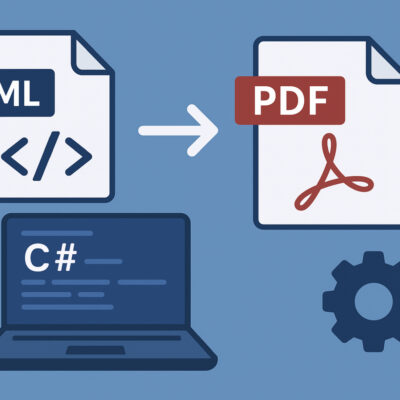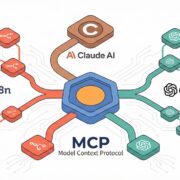Let’s face it, it’s mind-boggling to stay on track with the latest findings in technology. Every week brings breakthroughs in AI, materials science, robotics, and beyond. For researchers devoted to innovation, missing a single landmark paper might mean falling behind.
However, internet searches or social media updates can’t substitute a targeted reference list. Midway through your morning coffee routine, you want to open a trusted source that delivers depth and context. That is why subscribing to the Tech Research Journal helps you zero in on the most impactful studies rather than wading through noise.
In this article, we present a curated list of ten essential technology journals. Whether you are an early‑career scientist charting new territory or a seasoned expert seeking a fresh perspective, you will find actionable tips for each title. By the end, you can build a weekly habit that keeps you informed and inspired.
Selection Criteria
Before diving into specific titles, it helps to understand how we chose these journals. Our goal was to feature publications that combine relevance, accessibility, and rigour in equal measure.
- Relevance to emerging technologies: We looked for journals covering AI, machine learning, robotics, electronics, networks, and materials. Each must publish papers pushing the boundaries of one or more of these fields.
- Accessibility: Open access is ideal, but we also factored in subscription options and preprint availability. If you can’t access the final PDF through your institution, there should at least be an arXiv or bioRxiv version.
- Publication frequency and review speed: Some journals publish monthly; others are quarterly. Fast peer‑review turnaround matters when you need insight on a hot topic.
- Reputation and community adoption: We checked impact factors, h‑indices, and editorial‑board rosters. A strong presence at IEEE or ACM conferences also signalled broad adoption by practitioners.
Top 10 Tech Journals Every Researcher Should Follow
1. IEEE Transactions on Pattern Analysis and Machine Intelligence
Scope: Computer vision, pattern recognition, AI algorithms
Why follow: It often ranks at the very top for AI research; editors aim for review decisions within eight weeks.
Practical tip: Sign up for special‑issue alerts on “Deep Learning” to catch rapid advances.
2. Communications of the ACM
Scope: Broad coverage of computing topics, from theory to real‑world applications
Why follow: It features accessible overview articles penned by leading experts.
Practical tip: Download the mobile app to browse themed collections offline.
3. Journal of Machine Learning Research (JMLR)
Scope: Foundational and applied machine learning
Why follow: It provides open access and publishes fast‑track articles every month.
Practical tip: Use the RSS feed for “Current Issues” and filter by keywords relevant to your projects.
4. Nature Electronics
Scope: Next‑generation electronic materials, devices, and circuits
Why follow: Its interdisciplinary work bridges materials science and electronics design.
Practical tip: Check the “News & Views” section for concise expert commentary on each paper.
5. ACM Computing Surveys
Scope: Comprehensive surveys of computing subfields
Why follow: One survey paper can replace dozens of scattered articles, saving you hours of literature trawling.
Practical tip: Store survey PDFs on a tablet for on‑the‑go reading.
6. IEEE Internet of Things Journal
Scope: IoT architectures, security, protocols, and applications
Why follow: It shares regular special issues on smart cities, edge computing, and industrial IoT.
Practical tip: Enable “Early Access” notifications in IEEE Xplore to read online first.
7. Advanced Functional Materials
Scope: High‑performance materials for electronics, energy, and sensors
Why follow: High impact factor; strong focus on device integration.
Practical tip: Watch the video abstracts to grasp complex concepts in under five minutes.
8. Robotics and Autonomous Systems
Scope: Robot architectures, control algorithms, and human–robot interaction
Why follow: It blends theoretical advances with real‑world robot deployments.
Practical tip: Follow key authors on ResearchGate for updates when preprints go live.
9. IEEE Transactions on Industrial Informatics
Scope: Automation, industrial control systems, and cyber‑physical security
Why follow: It offers essential reading for Industry 4.0 initiatives and innovative manufacturing research.
Practical tip: Use institutional access to set up personalized email alerts by keyword.
10. npj Digital Medicine
Scope: The convergence of technology, data science, and healthcare delivery
Why follow: Open access; rapid publication cycle for translational studies.
Practical tip: Subscribe via PubMed’s “Ahead of Print” filter for instant notifications.
How to Stay on Top of New Issues
Even when you have subscriptions in place, it is easy to get lost in the sheer volume of new publications. Establishing a clear, repeatable system will help you manage incoming material without stress.
First, create dedicated folders in your RSS reader or email client. Label one “Tech Journals” and another “Preprints.” Whenever a new alert arrives, move it into these folders at once. That way, your primary inbox stays uncluttered, and every relevant update is waiting for you in a single, easy‑to‑access spot.
Next, develop a habit of brief daily scans. Allocate ten minutes each morning to glance at titles and abstracts. You do not need to read entire papers at this stage. Mark the ones that seem most relevant with a star or flag. Over the week, you will accumulate a shortlist of two or three must‑read articles. This shortlist transforms a daunting stack into a curated queue.
Once your shortlist is ready, schedule a weekly “journal hour.” Block out sixty minutes in your calendar, ideally at a time when you tend to work most effectively. During this session, read at least one full paper and skim two more with a focus on methodology or results sections. Take handwritten notes or type summaries in a shared document so that you create a personal archive of insights.
Finally, don’t overlook community channels. Join LinkedIn groups, Slack workspaces, or ResearchGate forums related to your discipline. Editors, conference organizers, and lab leads often post links to special issues or forthcoming calls for papers. By combining automated alerts, daily scans, a weekly deep‑dive session, and active community engagement, you will transform the torrent of publications into a manageable, inspiring stream of knowledge.
Final Words
Staying current with technological breakthroughs demands more than random Google searches. By focusing on our top ten journals, you gain a reliable window into the most transformative research. Each title offers unique strengths, from comprehensive surveys to lightning‑fast publication channels.
Now it is your turn:
Pick a journal or two, subscribe, and carve out a routine that works for your schedule. With a disciplined approach, you will transform a flood of information into a manageable stream, empowering your research to thrive.









